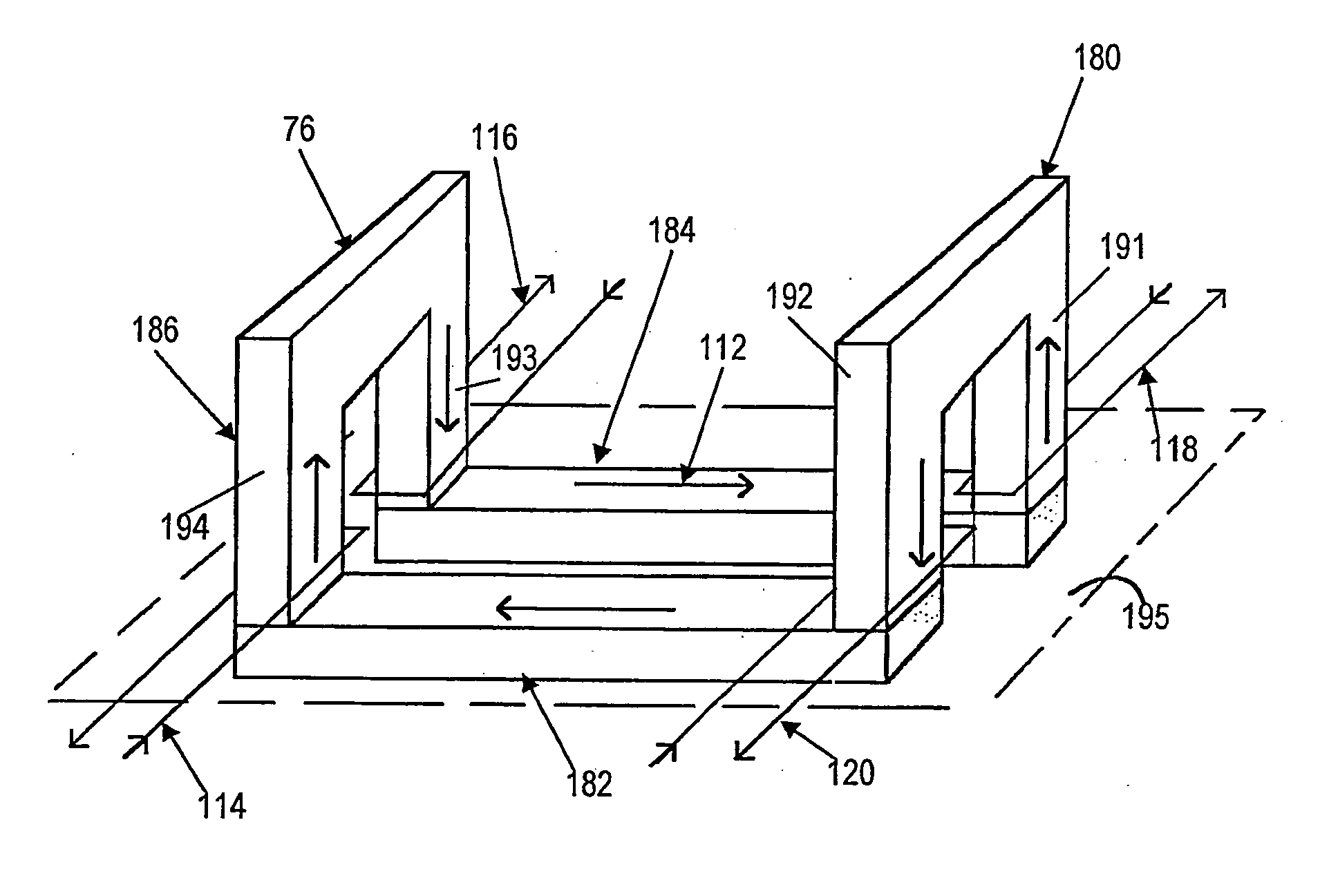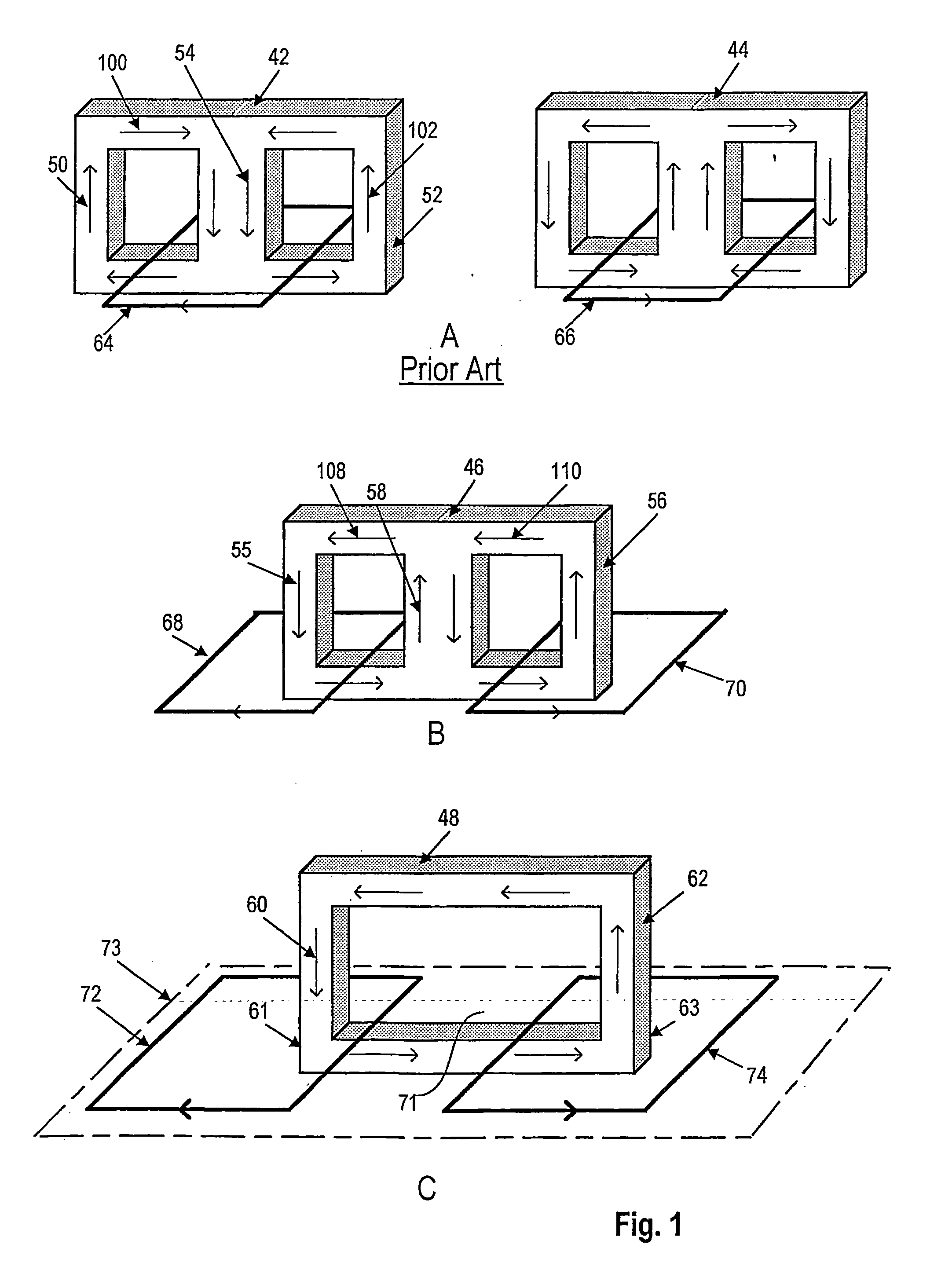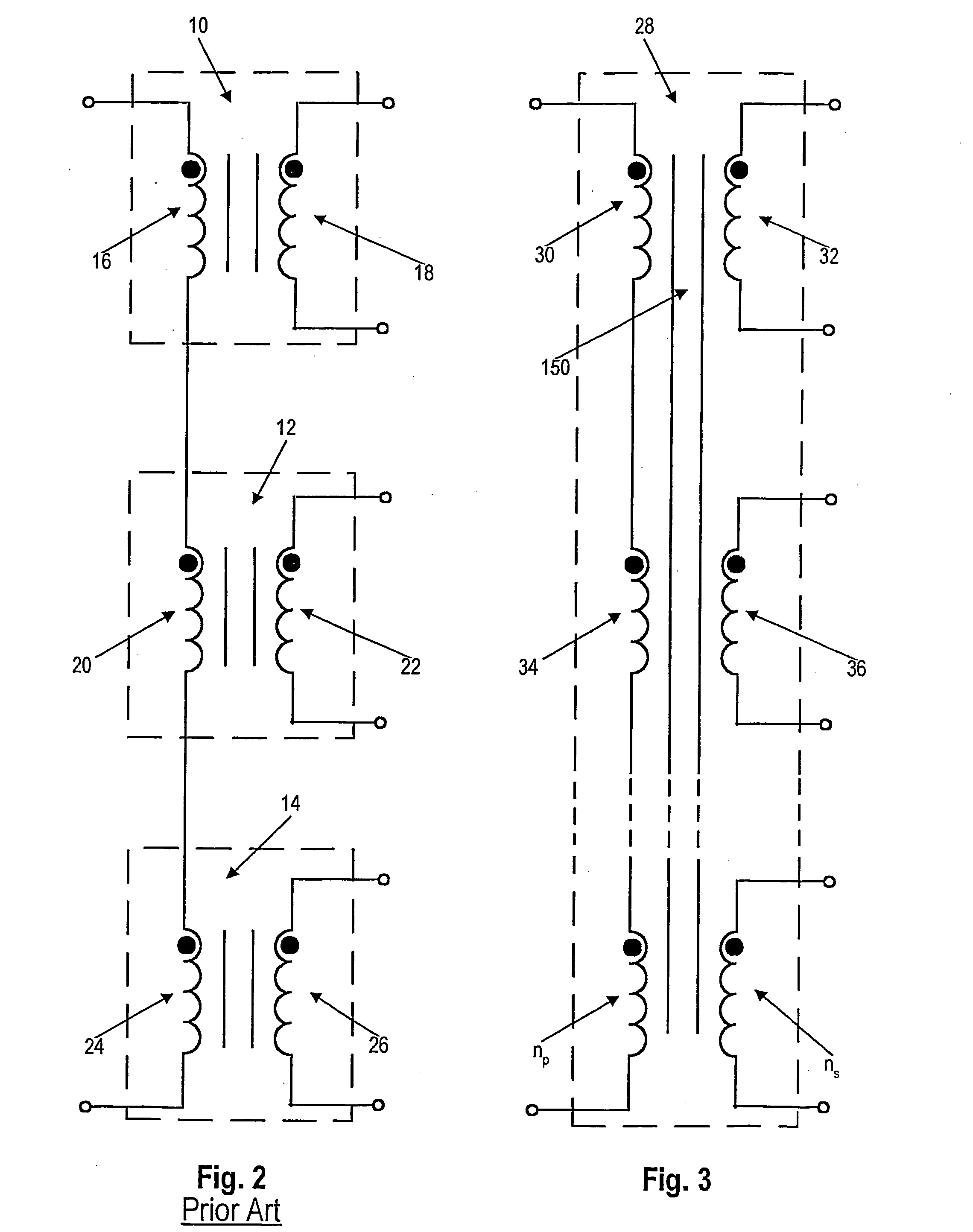Low profile magnetic element
- Summary
- Abstract
- Description
- Claims
- Application Information
AI Technical Summary
Benefits of technology
Problems solved by technology
Method used
Image
Examples
Embodiment Construction
[0028] Turning to FIG. 3, a transformer structure 28 according to the invention is shown schematically. To split the output current, independent secondary windings are used, such as 32, 36 . . . ns. Typically, for high current, these secondary windings have only one turn. Primary windings of the transformer 28 are also split in the same number of sections as the secondary. These sections 30, 34 . . . np are close coupled with their equivalent secondary 32, 36 . . . ns. In this way a close coupling between primary and secondary is formed. The magnetic flux in a magnetic core 150 used by the structure 28 links all of the windings. For comparison, FIG. 2 is a schematic representing the prior art concept wherein independent transformer structures are used for splitting the output current. As mentioned before, in this prior art approach, the magnetizing current is lower and it leads to a larger magnetizing current and lower efficiency.
[0029]FIG. 1 demonstrates the transition from the pr...
PUM
| Property | Measurement | Unit |
|---|---|---|
| Electrical conductor | aaaaa | aaaaa |
| Magnetism | aaaaa | aaaaa |
Abstract
Description
Claims
Application Information
 Login to View More
Login to View More - R&D
- Intellectual Property
- Life Sciences
- Materials
- Tech Scout
- Unparalleled Data Quality
- Higher Quality Content
- 60% Fewer Hallucinations
Browse by: Latest US Patents, China's latest patents, Technical Efficacy Thesaurus, Application Domain, Technology Topic, Popular Technical Reports.
© 2025 PatSnap. All rights reserved.Legal|Privacy policy|Modern Slavery Act Transparency Statement|Sitemap|About US| Contact US: help@patsnap.com



